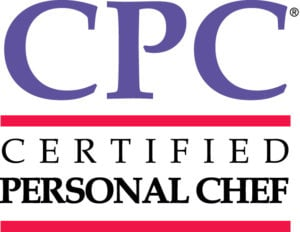Sustainable Fish

When we think about sustainability we immediately think of our impact on Earth:
-How big is our carbon footprint
-Reducing our waste
-Improving for future generations
Overall, we are beginning to move in a good direction with awareness and more sustainable practices. However, one huge natural ecosystem that is crucial to our planet is our ocean, and it is in dire need of our help. The reality is, we dump harsh chemicals, mountains of trash, and millions of tons of plastic into our oceans.
There are many companies and volunteer services that are constantly making efforts to clean our oceans, two of the largest being 4Ocean and The OCEAN CLEANUP. If you buy a bracelet, t-shirt, or any other apparel, you’re helping pull a pound of trash from the ocean. Check out these links to learn more about how you can help!
The 4ocean Bracelet – Every purchase pulls a pound of plastic from our oceans and coastlines
What Fish are in Season Now?
Good Fish: Bad Fish:
Arctic Char Basa
Clams- Razor, Quahog, Soft Shell Chilean Black Sea Bass
Scallops- Alaskan, Bay Orange Roughy
Catfish Atlantic Halibut
Cod Red Snapper
Swordfish Sablefish
Tilapia Bluefin Tuna
Atlantic Cod
Have you ever wondered where your salmon comes from when it is not in season? Often it is the result of a fish farm. There is a distinct difference between farmed salmon and wild salmon: wild salmon has fewer calories and saturated fats and has more vitamin A and D. Farmed salmon does contain more protein, but you lose other essential nutrients in exchange. Both types contain comparable amounts of Omega-3 which have a lot of great health benefits sought out by people, another reason so many love this protein.
Not only do you lose natural vitamins, but farmed salmon meat is dyed to get that beautiful color we all know so well. Wild salmon eat a lot of krill and shrimp which are high in astaxanthin (this is a potent antioxidant to help them fight disease) and that is what helps develop that distinct color in the fish. Farmed fish are given pellets that have a synthetic astaxanthin, but it is not nearly as much nor as potent in preventing disease.
While the fish farms are seen as a band-aid solution for overfishing one of the world’s favorite proteins, a real sustainable solution is a very simple one. If salmon is not in season, have less of it, and try another fish! Overfishing is due to the extreme demand we have put onto our planet. Consumers truly don’t realize they have a lot of power in changing how businesses operate. If we try other alternative protein sources, it lessens the strain we put on Mother Nature.
If we continue down the path of utilizing farms we will have severe consequences. Currently it’s projected rate to meet demand is more than double its current capacity. This is hurting many natural ecosystems: on both land and sea, removing those small fish for birds.
We also run into the potential problem: What happens when we have a breach, or their product escapes? This would increase competition with native wildlife for food, habitat, and spawning areas. Or interbreeding which can lead to genetic modification and degradation, for us means lower quality of fish. Non-native species also spread new diseases and parasites, such as sea lice, which is incredibly destructive for native marine life. This happened back in October 2017, in Washington State by Cooke Aquaculture Pacific, LLC. More than 160,000 farmed fish escaped and mixed with the wild, and it continues to happen today.
The amount of energy put into producing farmed fish is immense, using even more resources we cannot afford to have contaminating our planet, to include fossil fuels for the ships, machines, housing, etc.
There are so many types of fish that are just as interesting and delicious to eat, we just aren’t used to them, or they might not look as beautiful to us. One excellent resource for fish sustainability for consumers and businesses is: seafoodwatch.org, they have recipes, sushi tips, and ways to get involved in helping our most valuable ecosystem. We always select sustainably harvested fish for our weekly meal service and chef for private dinner parties.
You can also look out for the sustainable seafood certification at grocery stores to make sure you are shopping a sustainable way! Here’s what it looks like:

Good luck! And we hope we have shown you the importance of preserving our oceans and become an advocate for sustainable fish!









